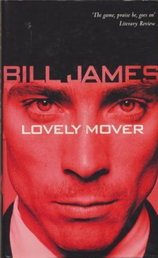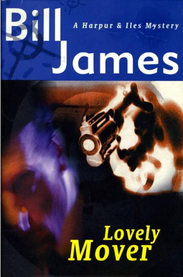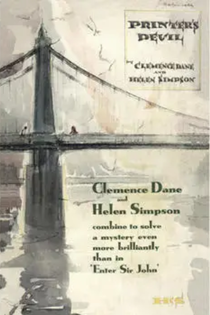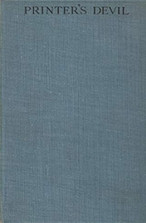
Sir John invites Varley to his club, but a friendly game of cards turns scandalous: the young man is accused of cheating, and a search of his suit jacket reveals a stitched inner pocket in the sleeve hiding additional aces. Although Varley denies any wrongdoing, the following day’s performance shows that the theater audience has already learned of the episode and has turned on him. Sir John cannot believe his honest ingenu has stooped to cheating. When the man flees the company and his rooming house like a fugitive, Sir John vows to clear Varley’s name and restore his reputation.
Two other people are affected by Varley’s Exit Stage Left. First, he leaves behind his love interest, an earnest and attractive journalist named Jill. Second, his landlady Mary Lake has become fond of her lodger and is upset by the accusation against him and his abrupt departure. Sir John makes an appointment to meet the plump Mrs. Lake, but she dies (presumably of a heart attack) in Piccadilly right before the scheduled meeting. Did the observant landlady know more than she realized? And why was Varley’s vacant room searched by an unknown visitor?
Re-Enter Sir John is the second and last novel by Clemence Dane and Helen Simpson to feature their amateur detective and professional actor/manager. His first outing, 1928’s Enter Sir John, holds up a bit better, in part because the stakes seem higher. In that story, Sir John Saumarez (né Simmonds) saves an actress accused of murder by investigating the crime and identifying the guilty party; he soon marries the exonerated and now-smitten Martella Baring. Sir John has no more than a social-party cameo in Printer’s Devil (1929), a novel that appeared between these two tales, and one where the murder mystery feels secondary to its strained run of comic romance.
Each of these books demonstrates that the authors can craft entertaining, evocative prose. As writers, Simpson and Dane are strongest when they are establishing settings or shading in their characters. They can also stage a climactic moment effectively, such as the scene in Re-Enter where Sir John attempts to force a reaction from a murderer. Instead of Prince Hamlet’s “Mouse-trap” play-within-a-play, the actor collaborates with a film director to create an avant-garde silent short designed to place psychological pressure on a certain member of its audience.
With those authorial strengths acknowledged, I also found it difficult to overlook the weaknesses within the pages and plot of Re-Enter Sir John. As the conclusion is reached and all is revealed, certain aspects of the story still feel illogical or bewildering. To take one example, framing young Varley by planting cards within the stitching of his suit jacket is an odd and awkward gambit; I don’t understand how the culprit had the opportunity to do such a thing and, perhaps more practically, why he would use this method to disgrace the man and get him out of the way when other solutions – including murder – were possible. (And Varley did not know playing cards were concealed in his jacket sleeve until he was searched?)

Perhaps I am being too critical, especially as there are far worse Golden Age artifacts out there. At least Dane and Simpson offer agreeable prose and an enjoyable glimpse of characters working in the theatre, from the actors and agents to the dressers and understudies who appear on the stage and behind the scenes.
Knowing that this will be the final performance of Sir John Saumarez, I shall clap politely at the curtain even as I hardly regret the lack of opportunity for an encore.






 RSS Feed
RSS Feed